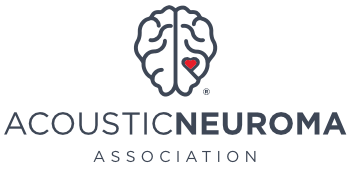What is Pilocytic Astrocytoma?


Pilocytic astrocytoma is a type of brain tumor that is generally considered benign, meaning it is not cancerous. Pilocytic astrocytoma is a type of glioma, which means it originates from glial cells—the supportive cells of the brain.
Specifically, it develops from astrocytes, star-shaped cells that provide nutrients to neurons. The term "pilocytic" refers to the tumor's characteristic hair-like cells when viewed under a microscope.
Pilocytic astrocytoma primarily affects children and young adults and is the most common type of brain tumor in this age group. These tumors usually grow slowly and are often found in the cerebellum, the part of the brain that controls balance and coordination.
Because of their slow growth, pilocytic astrocytomas are often treatable, and patients can have a good prognosis after appropriate medical intervention. Understanding this condition can help patients and families feel more informed and prepared when discussing treatment options with healthcare providers.
Pilocytic Astrocytoma Symptoms
The symptoms of pilocytic astrocytoma can vary depending on the tumor's location and size. Common pilocytic astrocytoma symptoms include:
- Headaches, especially in the morning
- Nausea and vomiting
- Balance and coordination problems
- Vision changes
- Seizures
- Behavioral or personality changes
However, it is important to note that these symptoms can be associated with many other conditions. If you or your child experience persistent symptoms, consult a healthcare professional for proper evaluation.
Diagnosis of Pilocytic Astrocytoma
Diagnosing pilocytic astrocytoma typically involves several steps:
- Medical history and physical exam: The doctor will ask about symptoms and perform a neurological exam.
- Imaging tests: MRI (Magnetic Resonance Imaging) is the primary tool for identifying pilocytic astrocytomas. CT scans may also be used.
- Biopsy: If imaging suggests a pilocytic astrocytoma, a biopsy may be performed to confirm the diagnosis and determine the tumor's grade.
Why should you have your surgery with Dr. Cohen?
Dr. Cohen
- 7,500+ specialized surgeries performed by your chosen surgeon
- More personalized care
- Extensive experience = higher success rate and quicker recovery times
Major Health Centers
- No control over choosing the surgeon caring for you
- One-size-fits-all care
- Less specialization
For more reasons, please click here.
Pilocytic Astrocytoma Treatment
Treatment for pilocytic astrocytoma depends on factors such as the tumor's location, size, and the patient's overall health. Standard pilocytic astrocytoma treatment options include:
- Surgery: The primary treatment is usually surgical removal of the tumor. Complete removal is often possible, which can lead to a cure.
- Radiation therapy: If the tumor can't be entirely removed or regrows after surgery, radiation may be used.
- Chemotherapy: While less common, chemotherapy might be used in certain situations, especially for tumors that can't be surgically removed.
- Observation: In some cases, especially if the tumor is small and not causing symptoms, doctors may recommend monitoring the tumor with regular MRI scans.
Pilocytic Astrocytoma Prognosis
The pilocytic astrocytoma prognosis is generally favorable compared to many other brain tumors. Factors affecting the prognosis include:
- Tumor Location: The location of the pilocytic astrocytoma affects how easily it can be removed and how much it impacts nearby brain areas. Tumors in accessible areas are easier to fully remove, while those in more sensitive or deep areas might cause more complications, affecting the outlook.
- Extent of Surgical Removal: The more of the tumor that can be taken out during surgery, the better the outcome. If the tumor is fully removed, the chances of long-term control and survival are higher. If part of the tumor remains, there is a greater risk of it coming back, which may require further treatments like radiation or chemotherapy.
- Patient’s Age: Younger patients, especially children, generally have better outcomes than older individuals. Children’s brains tend to recover better from surgery, and their overall health is usually stronger, leading to improved results.
- Overall Health: A patient’s general health and fitness affect how well they recover from surgery and whether they can handle additional treatments if needed. Patients in good health typically recover faster and have fewer complications. Other medical conditions may also affect treatment options and the overall outlook.
The pilocytic astrocytoma survival rate is quite high. With treatment, many patients have an excellent long-term outlook. According to the American Cancer Society (ACS), The 5-year survival rate for children with pilocytic astrocytoma is about 95%. The 10-year survival rate for individuals diagnosed with pilocytic astrocytoma before the age of 20 is over 92%, per the National Cancer Institute.
Pilocytic Astrocytoma Life Expectancy
Although it's difficult to provide a specific life expectancy for pilocytic astrocytoma as each case is unique, many patients go on to live normal lives. The exact outcomes can vary based on factors like the tumor's location and the patient's overall health. After successful treatment, regular follow-up appointments and imaging studies are crucial to monitor for any potential tumor regrowth.
Living with Pilocytic Astrocytoma
A pilocytic astrocytoma brain tumor diagnosis can be challenging for patients and their families. However, with proper treatment and support, many individuals lead full and active lives. Some considerations for living with pilocytic astrocytoma include:
- Regular follow-ups: Regular doctor visits and MRI scans are necessary to check if the tumor comes back and to monitor any lasting effects from treatment. These visits also help spot any new physical or cognitive issues that might develop over time.
- Managing long-term effects: Survivors might face long-term issues like memory problems, hormone imbalances, or tiredness. Other possible problems include growth issues, vision changes (like cataracts), and dental problems from radiation treatment.
- Emotional and psychological support: It’s common for survivors to feel anxious, worried about the tumor returning, or lonely after treatment ends. Counseling and emotional support can help manage these feelings and improve overall well-being.
- Joining support groups: Support groups and mentoring programs can be a great way for survivors and their families to share experiences, feel less alone, and get advice on dealing with everyday challenges after treatment.
Key Takeaways
- A rare, usually benign brain tumor that primarily affects children and young adults, often found in the cerebellum, optic nerve, or brain stem.
- Diagnosis typically involves a medical history review, neurological examination, imaging tests like MRI, and possibly a biopsy to confirm the tumor type.
- The main treatment is surgical removal of the tumor. Radiation therapy and chemotherapy may be used if surgery isn't fully effective. In some cases, careful monitoring is recommended.
- The prognosis for pilocytic astrocytoma is generally very good, with a 5-year survival rate exceeding 90% for children after treatment.
- Ongoing medical follow-ups and support for emotional and psychological needs are crucial for patients and their families after a diagnosis of pilocytic astrocytoma.











